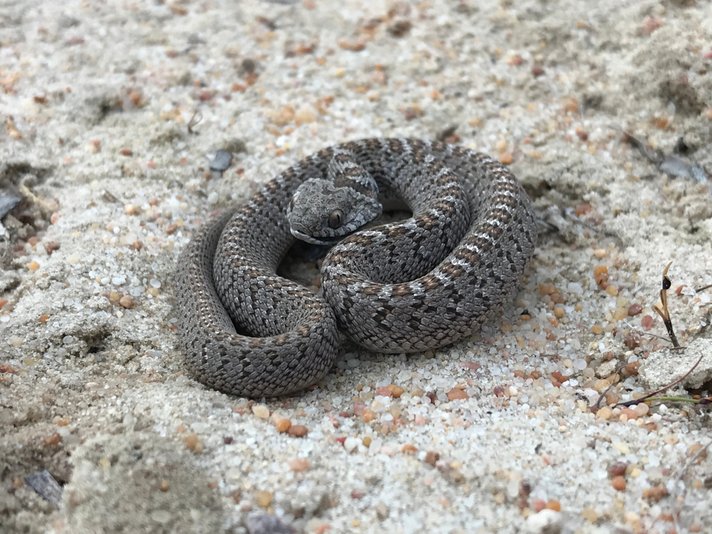Egg-Eating Snake
Most of sub-Saharan Africa and parts of the Middle East.
Captive Housing: Egg-eaters are easy to maintain. Start with a 20-gallon or larger terrarium with a heat pad at one end set to generate a hot spot of about 95 degrees Fahrenheit. The overall temperature of the enclosure can be held at about 70 degrees. It does get cold in some parts of the snake’s range, so a drop in temperature at night is not a huge issue, but try to keep it above 60 degrees.
Substrate can be as simple as aspen bedding or bark. Place a hide on the warm side of the terrarium for shelter. Place another hide on the cooler side, and create a humid hide by placing damp moss beneath it. Re-dampen as needed and throw away and replace soiled moss.
Add sticks, branches, silk or plastic plants, giving your snake places to check out and explore. Egg-eating snakes do climb a bit, and they should be given the chance to do so. A naturalistic set-up would look great, and the front-opening enclosures work well for this, plus look really nice and would enhance a living room or den.
Because of the light weight and size of egg-eating snakes, live plants can be used for décor as long as they are not too delicate. Snakes tend to “trample” delicate vegatation in terrariums. Using sturdy plants and hefty branches works well. Perhaps even a small water feature could be used to enhance the enclosure’s appeal.
I recommend a fluorescent light for viewing and to give this snake a day/night cycle. Make sure to have secure doors or a top, as you don’t want your egg-eater wandering off. These guys usually cruise around at night.
Diet: As its name implies, the egg-eating snake eats eggs, and only eggs. Because of their small size they can’t just eat chicken eggs, which are too large. To feed these little guys, you will need a steady supply of quail, finch, canary or other smaller birds’ eggs.
Egg-eaters prefer fresh eggs, but some will take refrigerated once the eggs have been warmed to room temperature.
Dasypeltis scabra doesn’t have real teeth, but rather bony plates in the mouth to enable the swallowing of an egg, which is pierced inside the snake’s throat, and the eggshell is regurgitated. There is no need for rodents or lizards when it comes to feeding this snake. It’s easy—nice and tidy—as long as you can supply the right type of eggs to feed it.
What’s Available: There is virtually no captive breeding of egg-eating snakes. All that I know of are imported into the U.S. from various African countries. Egg-eaters are actually common in Africa and huge numbers are not collected. Few stores carry them, but you can sometimes find them for sale on the Internet and at reptile shows.
I recommend a vet visit when you get your egg-eating snake, for a fecal exam and to check for internal and external parasites.
Wild imported egg-eaters will be defensive at first, but they tend to calm down and adapt to captivity well. Offer them a lot of water to drink and let them settle in. They can become very docile and usually tolerate handling without biting, making the egg-eating snake an easy-to-care-for, interesting pet as long as its dietary needs are met.
Extra: When egg-eating snakes feel threatened they will rapidly rub their scales together to create a rasping sound, much like a hiss, to try to scare predators away.
Ken Foose produced his first captive-bred snakes at age 11. With a Master’s Degree in zoology, he has been both a zookeeper and curator. He opened Exotic Pets, which specializes in reptiles and amphibians, in Las Vegas in 1991. He is currently president of the International Herpetological Symposium.

